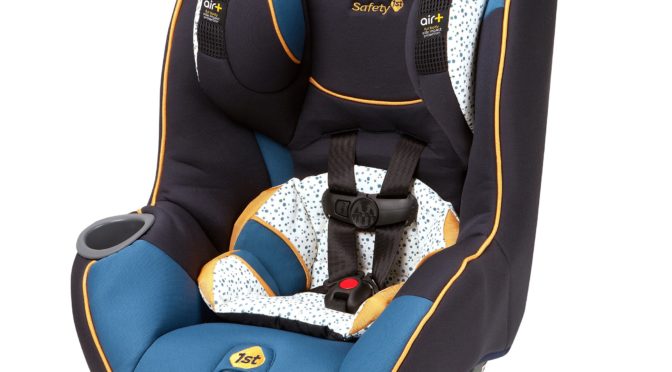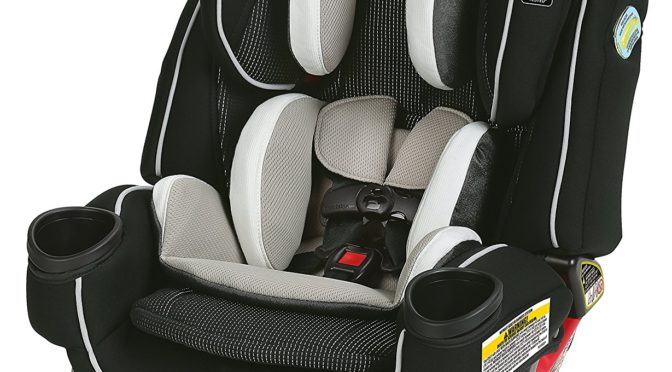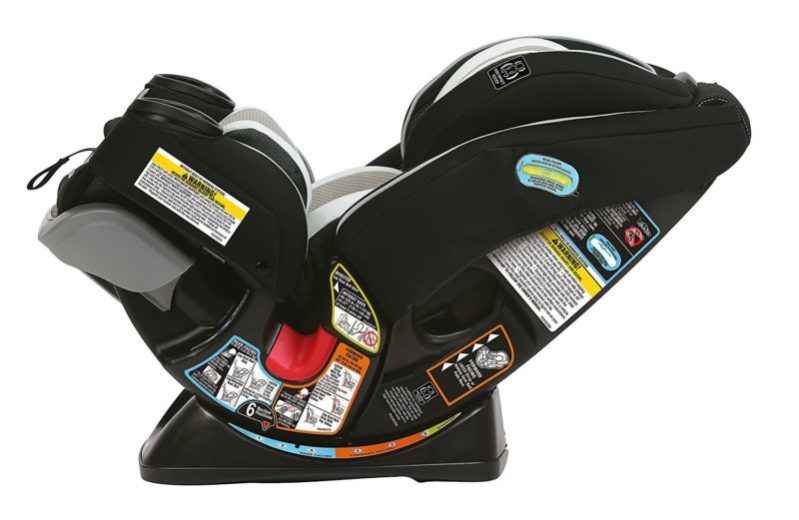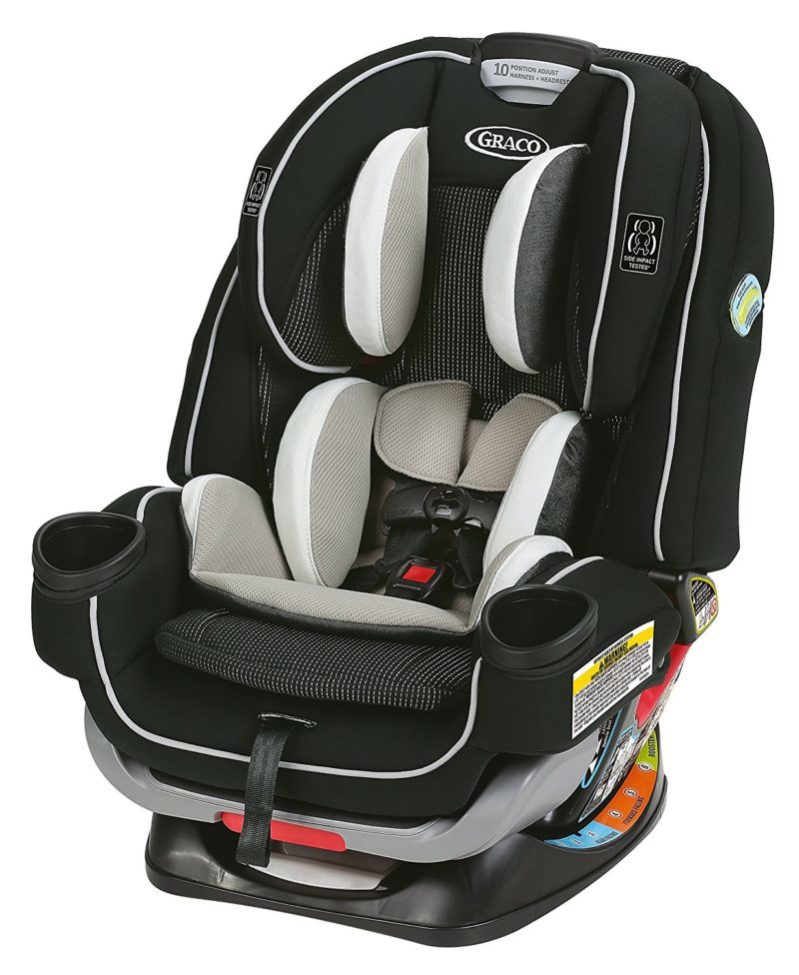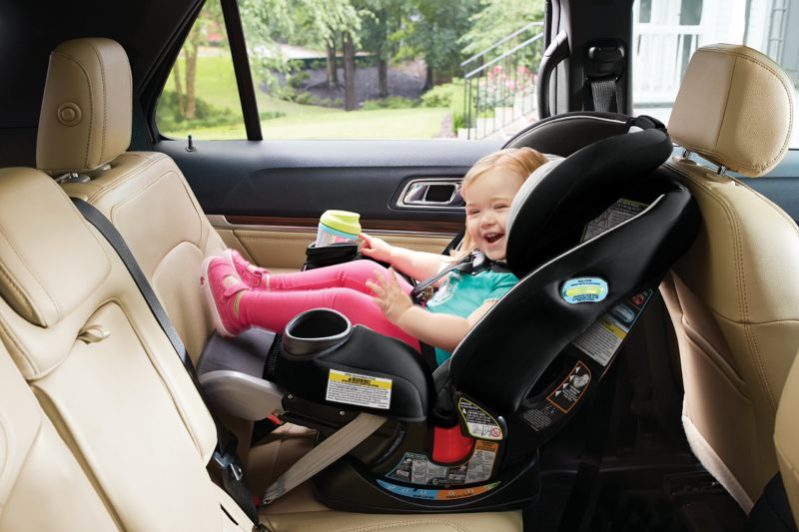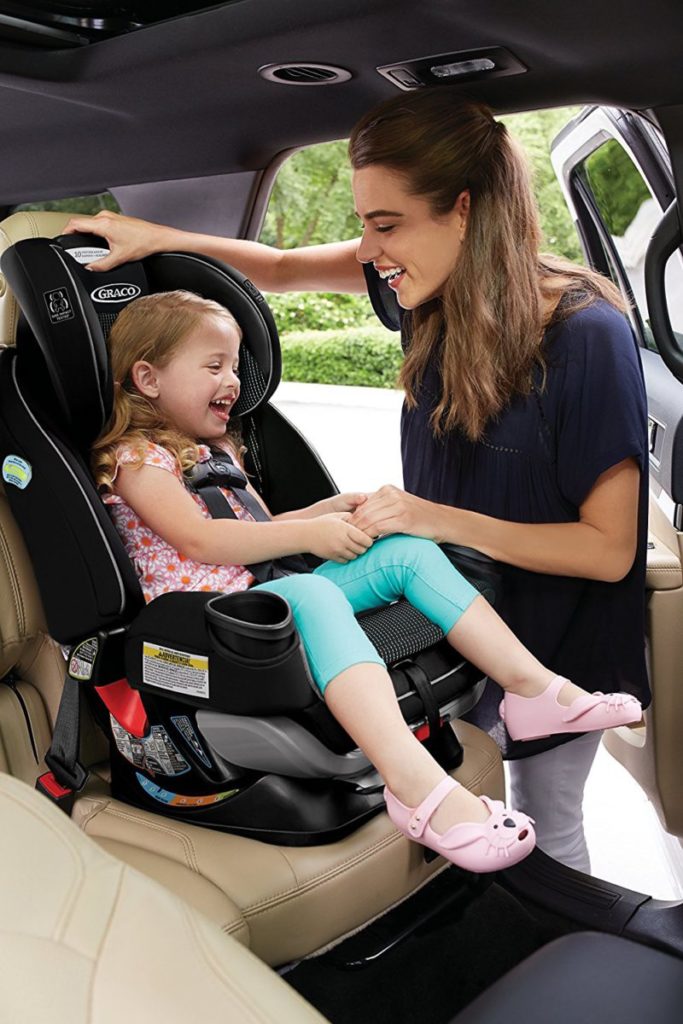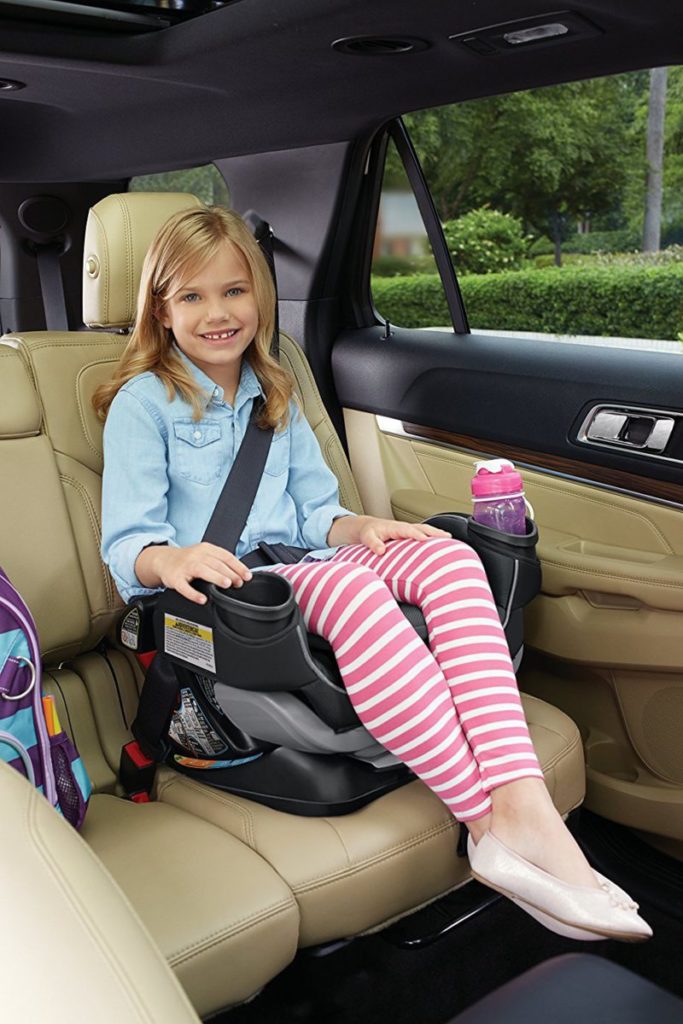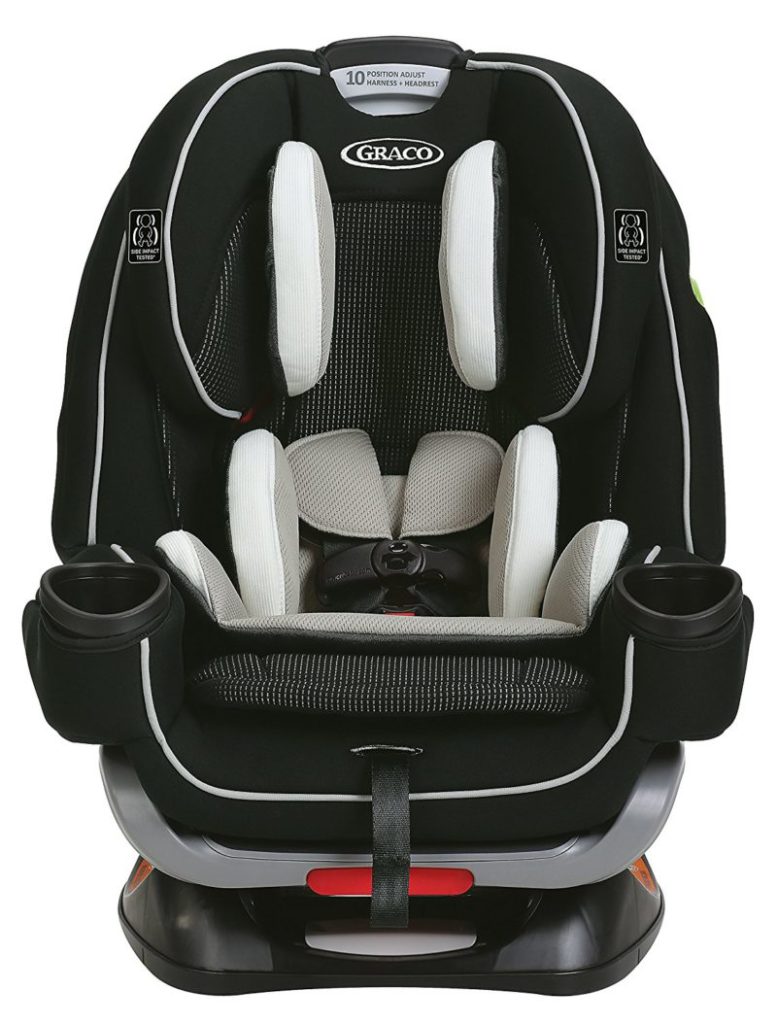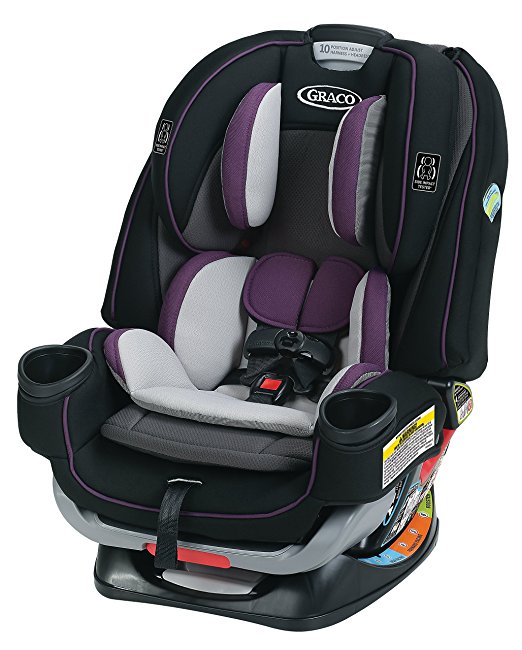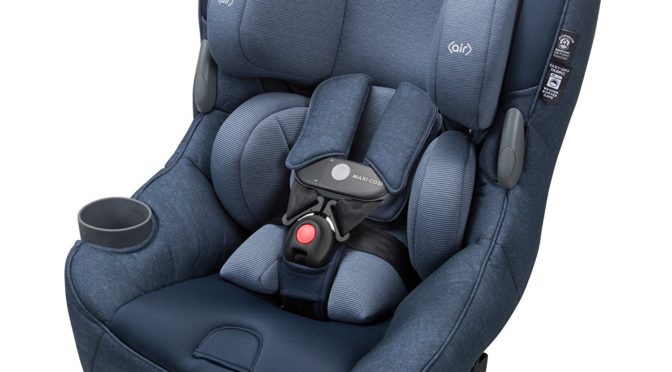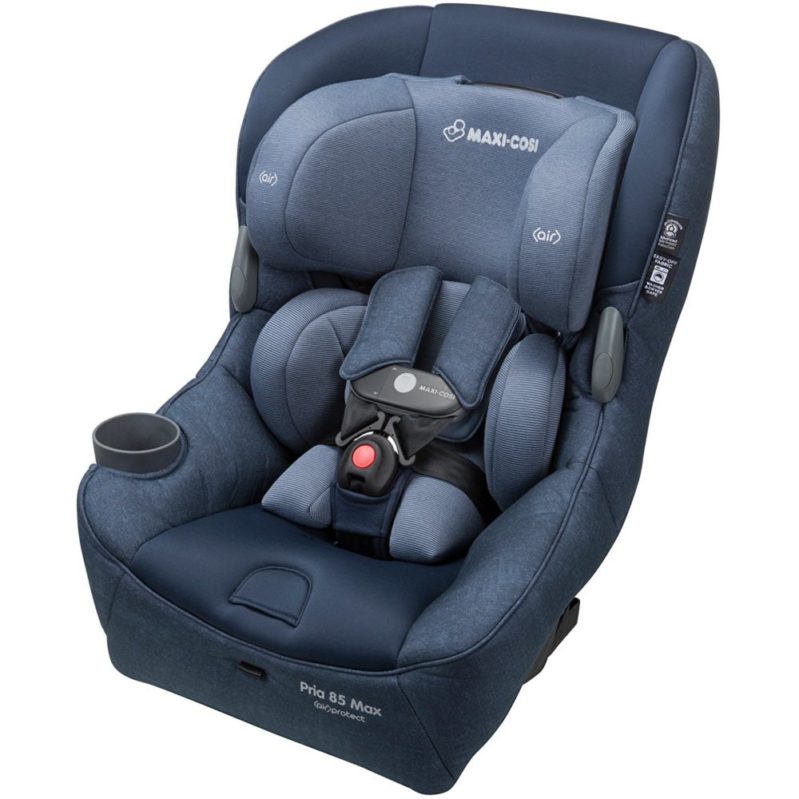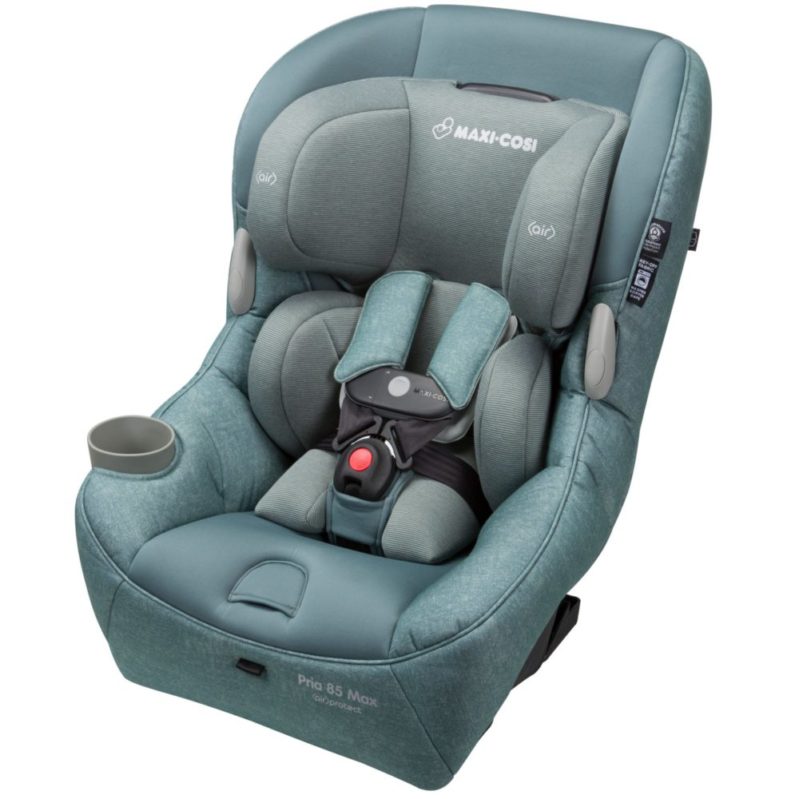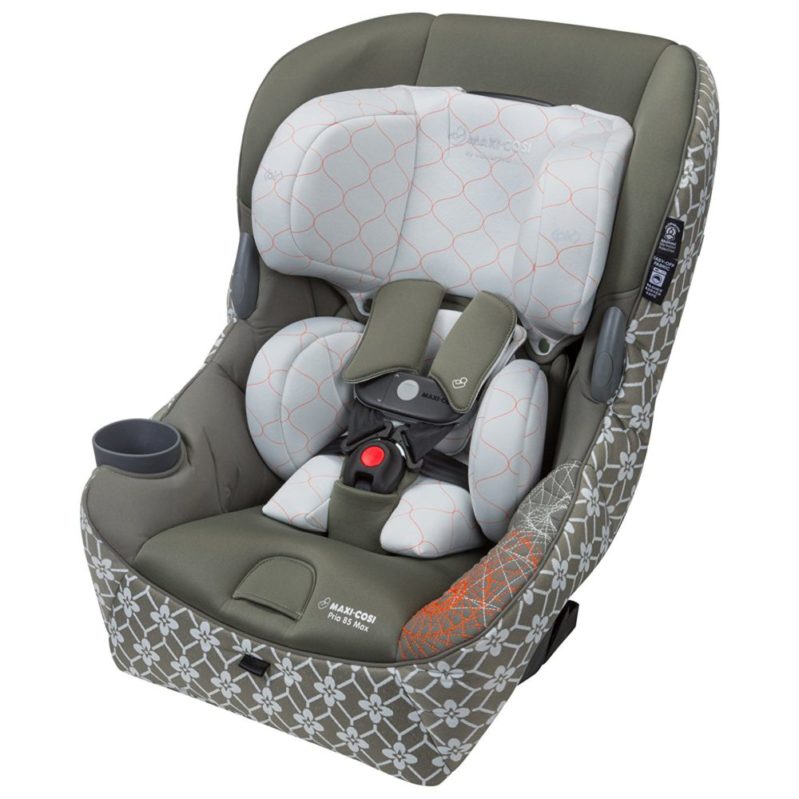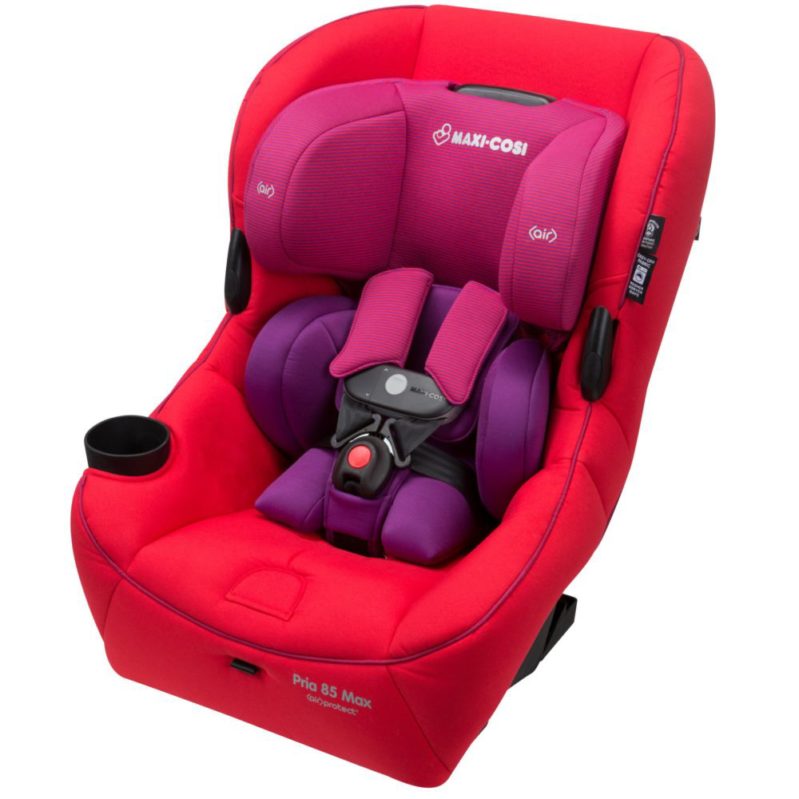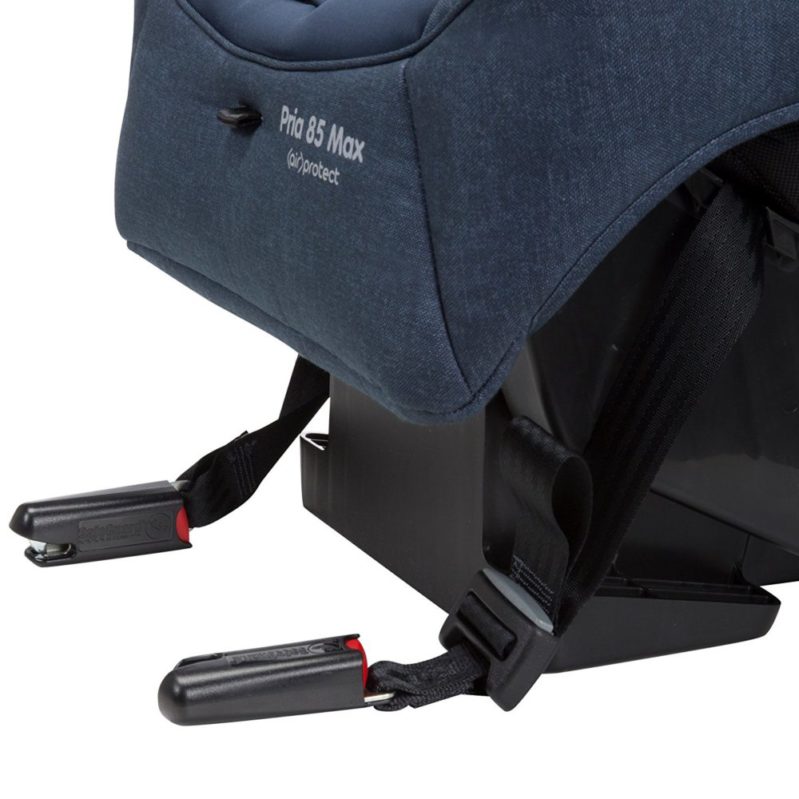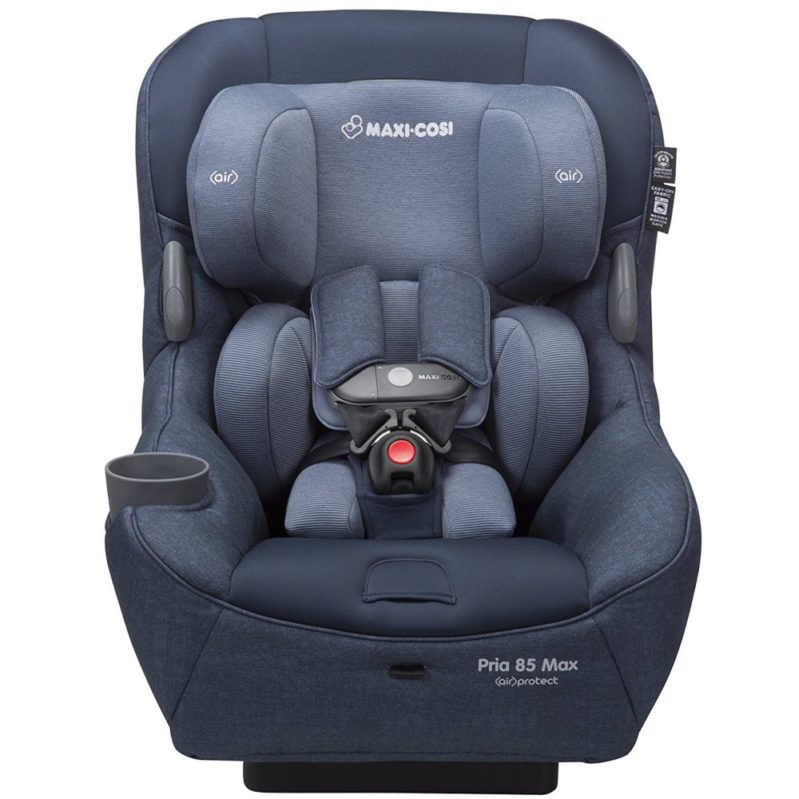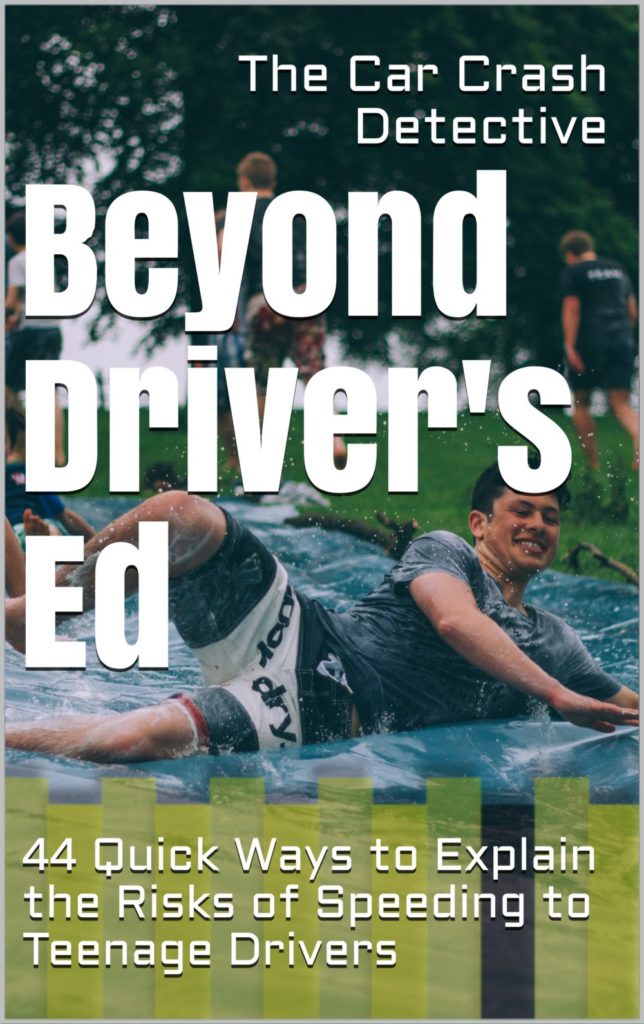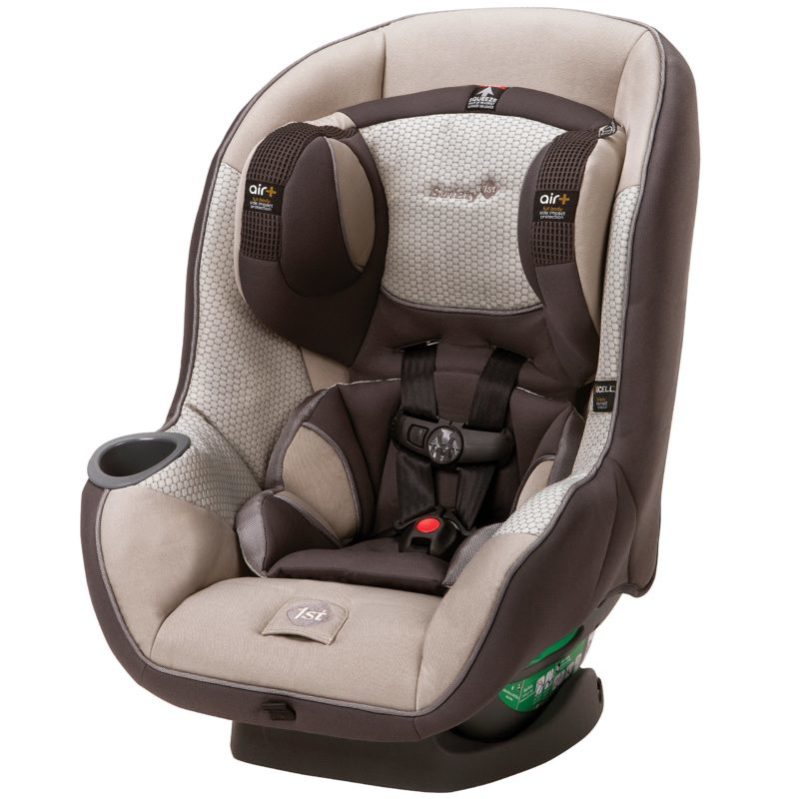
Parents in the United States have more opportunities to rear-face than ever before. Even though the majority of parents continue to forward-face by shortly past 1, more and more parents are learning of the benefits of continuing to rear-face until 4 or beyond, like our fellow parents in Sweden and Norway. None of this would be possible, though, without an increasing array of seats that push the limits in weight and height for extended rear-facing.
Right now in the United States, if you want to rear-face your child until 50 pounds, you have a few options: the Clek Fllo, the Clek Foonf, the Diono Rainier, the Graco Extend2Fit, the Graco Extend2Fit 3-in-1, the Graco 4Ever Extend2Fit, the Nuna Rava, the Safety 1st Advance EX 65 Air+, and the Safety 1st Grow and Go EX Air. However, with few exceptions, most of these seats clock in at well over $200. Today we’ll take a closer look at a seat that doesn’t: the Safety 1st Advance EX 65 Air+. Depending on which color you buy, you can buy it for as little as under $150! But how does it compare to the other, more expensive, 50 pound convertible car seats on the market? Very well, actually. Let’s dive into the details below.
Safety 1st Advance EX 65 Air+ – What’s the big deal?
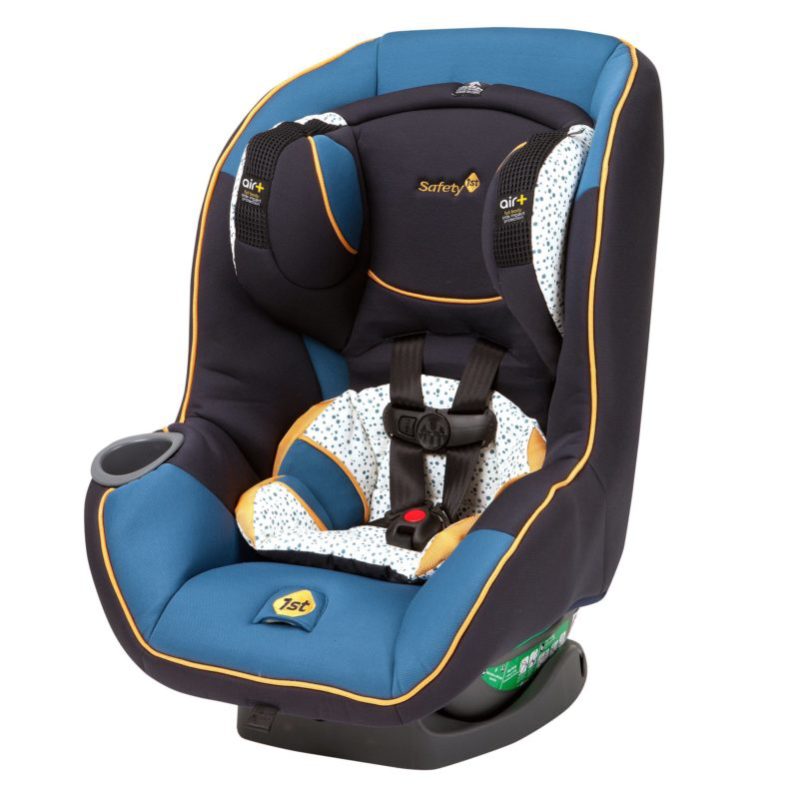 The Safety 1st Advance EX 65 Air+ is a convertible car seat an one of the best values on the market today for extended rear-facing. Being a convertible car seat, you can start using it the moment you’re ready to leave the hospital (you don’t need to use an infant seat) as long as your baby fits it properly in terms of the lower weight limit, head support, recline angle, and harness adjustability. Once your child reaches either the height or weight limits for the Air+ when rear-facing, you can then turn it forward-facing until your child reaches the height and weight limits in that configuration. At the end of its 8 year life, the seat will be considered expired and will need to be replaced.
The Safety 1st Advance EX 65 Air+ is a convertible car seat an one of the best values on the market today for extended rear-facing. Being a convertible car seat, you can start using it the moment you’re ready to leave the hospital (you don’t need to use an infant seat) as long as your baby fits it properly in terms of the lower weight limit, head support, recline angle, and harness adjustability. Once your child reaches either the height or weight limits for the Air+ when rear-facing, you can then turn it forward-facing until your child reaches the height and weight limits in that configuration. At the end of its 8 year life, the seat will be considered expired and will need to be replaced.
Safety 1st Advance EX 65 Air+ Limits for Weight and Height
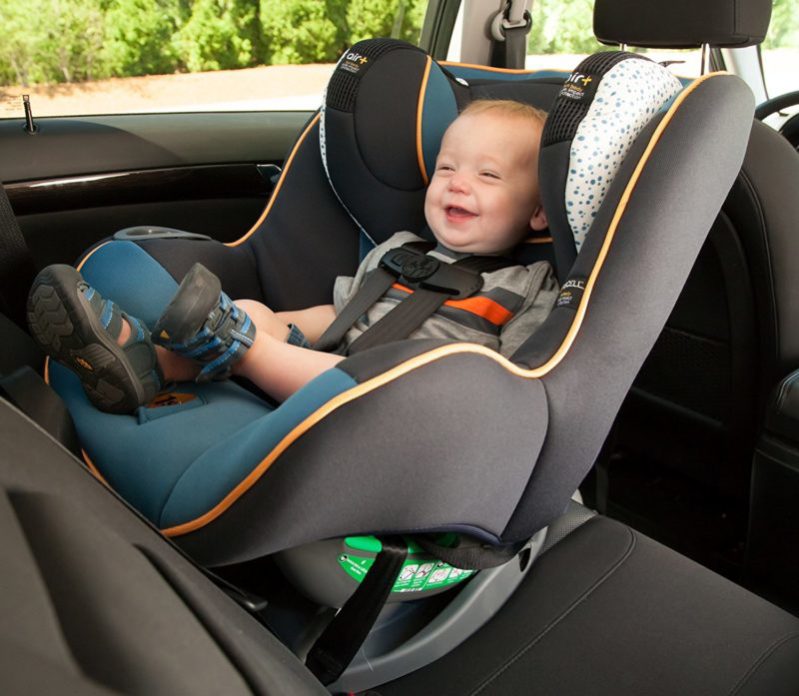 Rear-facing: 5 to 50 pounds. It’s best practices to rear-face as long as possible, which in this case means rear-facing up to 50 pounds if at all possible, since rear-facing is the safest way for a child to travel in a moving vehicle. The rear-facing height range ranges from 19″ to 49″, and your child’s head must also stay beneath 1″ from the top of the headrest when extended. The shell height is a wonderfully large 28″ when fully extended, and according to Center for Disease Control growth charts (which are the same for girls and boys), a 50th percentile child reaches 50 pounds when 7 years old and 49″ when 7:5 (7 years, 5 months).
Rear-facing: 5 to 50 pounds. It’s best practices to rear-face as long as possible, which in this case means rear-facing up to 50 pounds if at all possible, since rear-facing is the safest way for a child to travel in a moving vehicle. The rear-facing height range ranges from 19″ to 49″, and your child’s head must also stay beneath 1″ from the top of the headrest when extended. The shell height is a wonderfully large 28″ when fully extended, and according to Center for Disease Control growth charts (which are the same for girls and boys), a 50th percentile child reaches 50 pounds when 7 years old and 49″ when 7:5 (7 years, 5 months).
This makes this a seat where rear-facing is actually limited by weight instead of height, which is very rare (but very good) in car seats. Three other examples of this in the rear-facing world are the Graco 4Ever Extend2Fit, the Graco Extend2Fit, and the Nuna Rava, all of which feature 50 pound and 49″ weight and height rear-facing limits due to the same design. What’s key to remember here is that you’ll be able to rear-face virtually every preschooler (all of whom should be rear-faced) and kindergartner (who still benefit from rear-facing, although they can also be forward-faced) without worry.
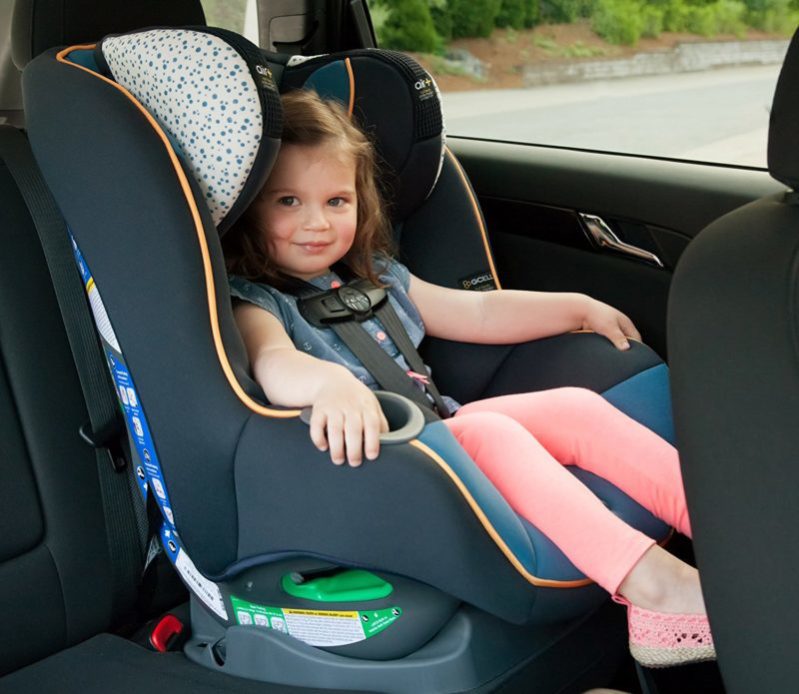 Forward-facing: 22 to 65 pounds. The forward-facing height range spans 29″ to 49.” As noted above, a 50th percentile child by height will reach this height at 7:5 while the weight limit won’t be reached until 10 for a 50th percentile child by weight. However, the seat’s usability would end for that same child at 7:5 due to the height limit being exceded then. If you were to rear-face to the limits before forward-facing, the dimensions and growth charts indicate you would be able to rear-face a typical child until 7 and then turn him or her forward-facing until s/he reached 7 years and 5 months. This is incredible. Practically speaking, you could also move directly from rear-facing into boostering, as the Swedes do, since most children will be able to sit appropriately in a high-back booster seat by age 7. Once this occurs, there are no safety advantages to continuing to forward-face vs high-back boostering. However, there’s nothing wrong or unsafe about continuing to forward-face until the seat is completely outgrown by weight or height.
Forward-facing: 22 to 65 pounds. The forward-facing height range spans 29″ to 49.” As noted above, a 50th percentile child by height will reach this height at 7:5 while the weight limit won’t be reached until 10 for a 50th percentile child by weight. However, the seat’s usability would end for that same child at 7:5 due to the height limit being exceded then. If you were to rear-face to the limits before forward-facing, the dimensions and growth charts indicate you would be able to rear-face a typical child until 7 and then turn him or her forward-facing until s/he reached 7 years and 5 months. This is incredible. Practically speaking, you could also move directly from rear-facing into boostering, as the Swedes do, since most children will be able to sit appropriately in a high-back booster seat by age 7. Once this occurs, there are no safety advantages to continuing to forward-face vs high-back boostering. However, there’s nothing wrong or unsafe about continuing to forward-face until the seat is completely outgrown by weight or height.
There is a minimum forward-facing requirement of 2 years, but if you’ve read this far already, you’re hopefully planning on exceeding that by several years.
Buy the Safety 1st Advance EX 65 Air+ on Sale at Amazon here.
Dimensions and Key Features of the Safety 1st Advance EX 65 Air+
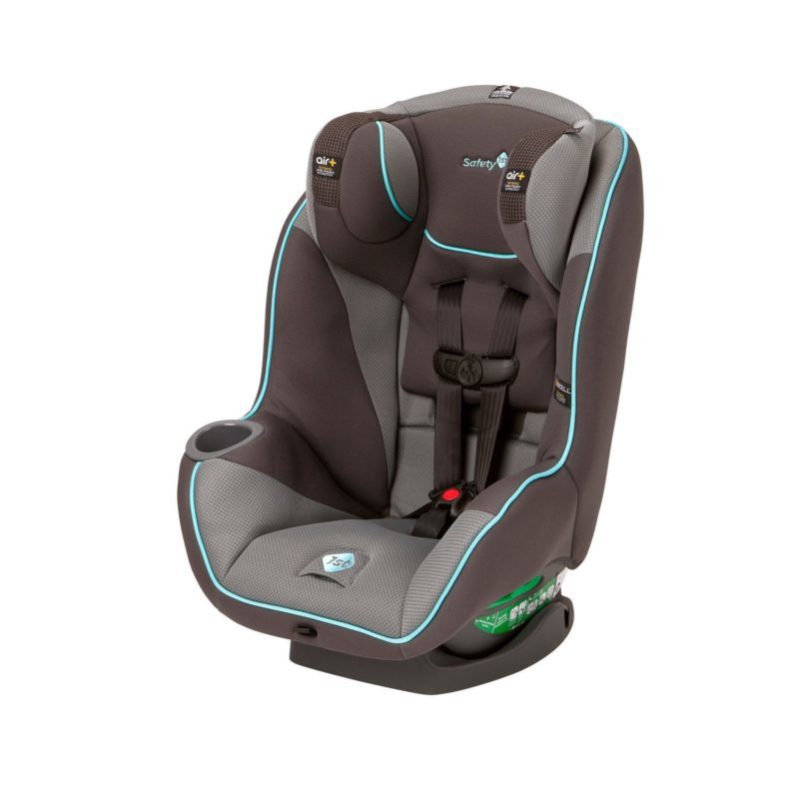 The Advance EX 65 Air+ is 20.5″ wide at its widest points across the armrests; it’s 28″ tall and 24″ long front to back. The seat itself weighs 28.4 pounds on my scale. It can be used for 8 years from its manufacturing date, and its harness height ranges from 7.5″ on the low end to 18″ on the high end. I measure the shell height at 28″ when the headrest is fully extended. Three crotch buckle positions are included in addition to a no-rethread harness. There are 3 recline positions to choose from. The seat is FAA certified for air travel and the expiration date is located beneath the seat and is stamped into the plastic. You can find the date of manufacture sticker on the side of the seat opposite the cupholder.
The Advance EX 65 Air+ is 20.5″ wide at its widest points across the armrests; it’s 28″ tall and 24″ long front to back. The seat itself weighs 28.4 pounds on my scale. It can be used for 8 years from its manufacturing date, and its harness height ranges from 7.5″ on the low end to 18″ on the high end. I measure the shell height at 28″ when the headrest is fully extended. Three crotch buckle positions are included in addition to a no-rethread harness. There are 3 recline positions to choose from. The seat is FAA certified for air travel and the expiration date is located beneath the seat and is stamped into the plastic. You can find the date of manufacture sticker on the side of the seat opposite the cupholder.
Using the Safety 1st Advance EX 65 Air+ (Rear-Facing Installation, Forward-Facing Installation, Child Fit, and Additional Bonuses)
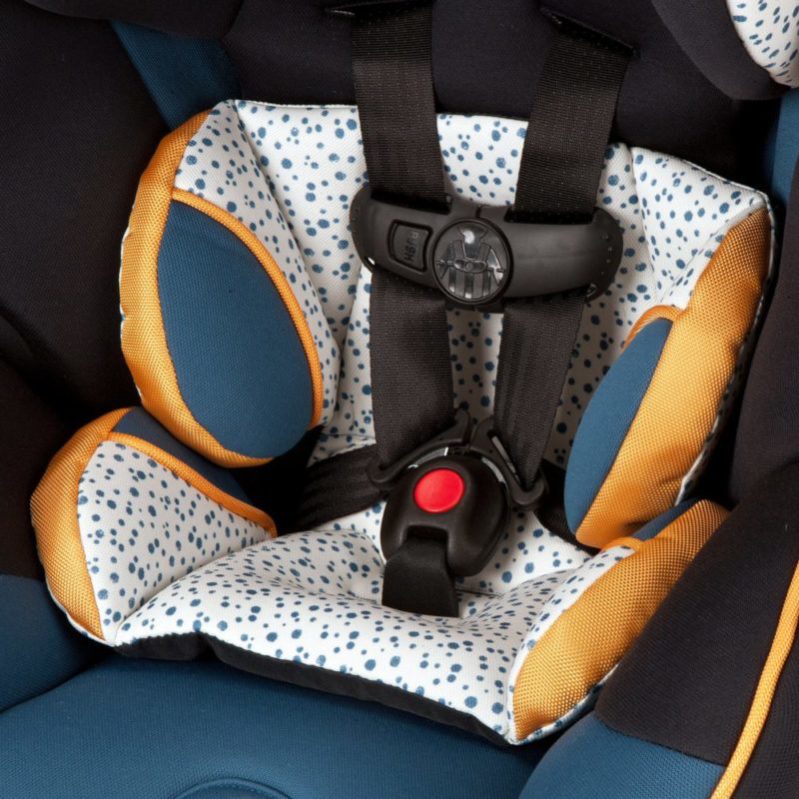 Installing the Air+ was straightforward in both rear-facing and forward-facing configurations. I was happy to see the inclusion of a no-rethread harness, as they simply make adjusting harness heights easier as your child grows, or when it’s necessary to swap a new child into a car seat, such as when carpooling or giving rides. I was happy to be able to achieve a good fit for newborns, toddlers, preschoolers, elementary-aged students, and middle-schoolers. I was also happy to see a handle included in the seat (it’s on the back) to make it easy to carry.
Installing the Air+ was straightforward in both rear-facing and forward-facing configurations. I was happy to see the inclusion of a no-rethread harness, as they simply make adjusting harness heights easier as your child grows, or when it’s necessary to swap a new child into a car seat, such as when carpooling or giving rides. I was happy to be able to achieve a good fit for newborns, toddlers, preschoolers, elementary-aged students, and middle-schoolers. I was also happy to see a handle included in the seat (it’s on the back) to make it easy to carry.
It’s important to note, however, that this is a very large seat as well as a rather hefty one. The weight means you aren’t going to want to move it around if you don’t have to (it’s not a seat you’ll want to tote through an airport; something that folds compactly like the Diono Rainier will be a far better choice). It’s also not a seat you’ll want to turn to for 3 across installations; the best 50-pound seats for that are the Clek Fllo and Clek Foonf at 17″ in width.
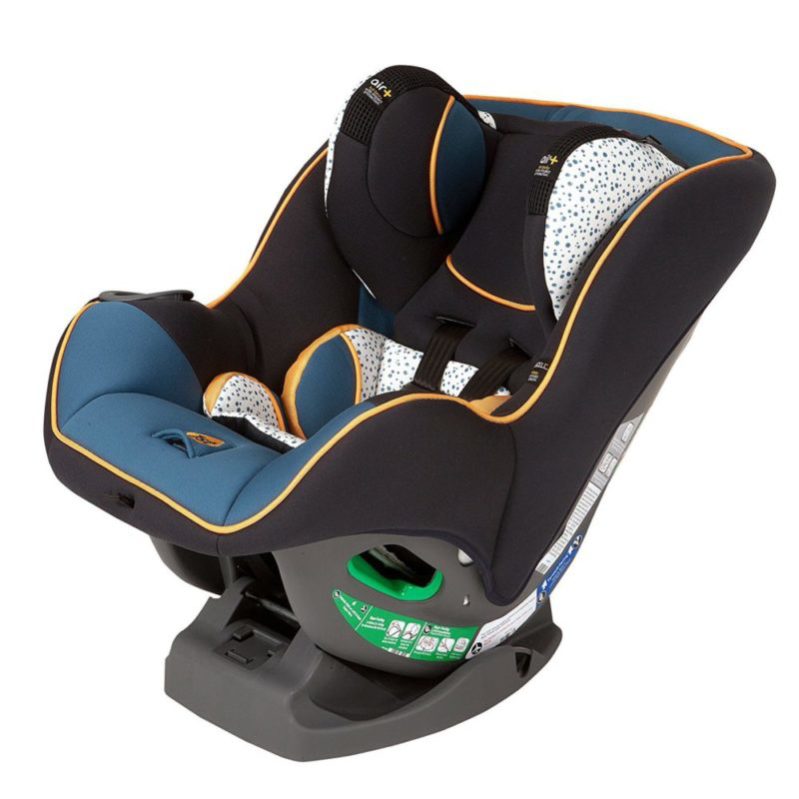 When installing the seat, remember that the lower LATCH anchor weight limit is 40 pounds. Since you can install the seat either through seat belts or LATCH, I’d simply install it from the start with seat belts to avoid having to reinstall it that way later when approaching the 40 pound weight limit. I typically always recommend seat belt installations since they make 3 across installations easier and because seat belts are just as safe as LATCH.
When installing the seat, remember that the lower LATCH anchor weight limit is 40 pounds. Since you can install the seat either through seat belts or LATCH, I’d simply install it from the start with seat belts to avoid having to reinstall it that way later when approaching the 40 pound weight limit. I typically always recommend seat belt installations since they make 3 across installations easier and because seat belts are just as safe as LATCH.
When rear-facing, you can choose between crotch buckle positions 1 and 2; the second position provides more space, and you should choose the position closest to your child. When forward-facing, you’ll want to use the included forward-facing tether to limit head excursion. When forward-facing, you can choose between the 3 crotch buckle positions at will.
Why Buy the Safety 1st Advance EX 65 Air+?
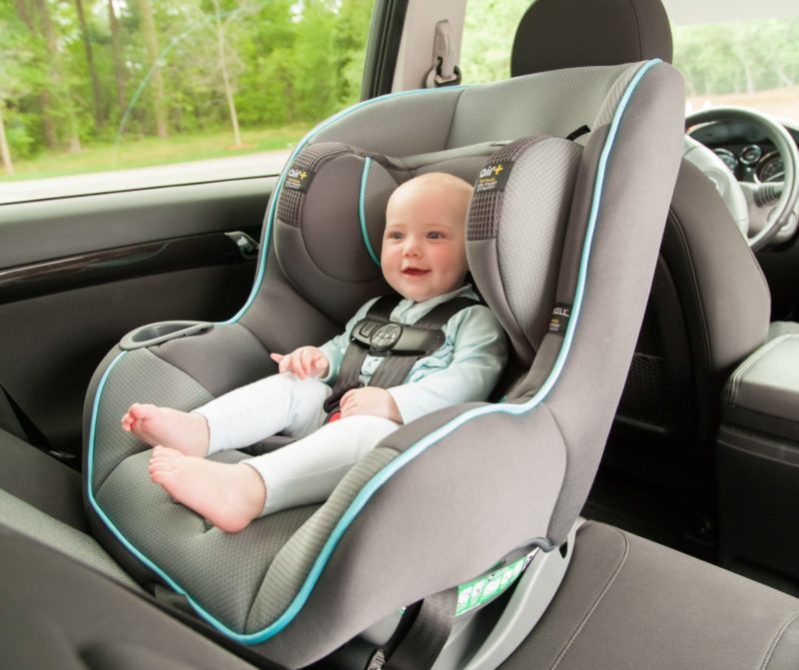 The Advance EX 65 Air+ is part of the growing democratization of car seats in the United States and Canada. What I mean is that it’s part of a growing number of seats that make extended rear-facing available to parents of all budgets. It specifically lets parents here rear-face to 4, 5, and even longer by featuring a 50 pound rear-facing weight limit and the highest height limit currently available at 49 inches. This is huge.
The Advance EX 65 Air+ is part of the growing democratization of car seats in the United States and Canada. What I mean is that it’s part of a growing number of seats that make extended rear-facing available to parents of all budgets. It specifically lets parents here rear-face to 4, 5, and even longer by featuring a 50 pound rear-facing weight limit and the highest height limit currently available at 49 inches. This is huge.
It’s hard to find things wrong with the seat without being very picky; it could be narrower, but seats like the Clek Fllo and Clek Foonf satisfy that need by allowing rear-facing to 50 pounds while coming in at a svelte 17.” It could fold into a more travel-friendly configuration, but you can turn the Diono Rainier into a backpack while still being able to rear-face to 50 pounds, forward-face, and booster. It could be cheaper, but the Graco Extend2Fit is already available to let you rear-face until 50 pounds for less than $200 and is more or less the same price, depending on which seat is more on sale at the moment at Amazon. It could have a longer lifespan, but the Graco 4Ever Extend2Fit does while allowing you to use it to rear-face, forward-face, and booster.
To put it mildly, the Air+ lets you rear-face as long as any other seat currently available in the US market while costing a fraction of the price of most of them. There isn’t anything safer than rear-facing, and this seat makes that possible on a small, small budget. Unless you have particular needs (such as for a narrower, shorter, more compact, or lighter seat), this is a good choice to keep your kids very, very safe for a modest price.
You can buy the Safety 1st Advance EX 65 Air+ in Hardwick Hall, Newbury, and Twist of Citrus here. Unfortunately, it’s not yet available in Canada, but Canadians can buy a similar seat, the Diono Rainier, here.
 If you find my information on best practices in car and car seat safety helpful, you can do your shopping through this Amazon link. Canadians can shop here for Canadian purchases. Have a question or want to discuss best practices? Join us in the forums!
If you find my information on best practices in car and car seat safety helpful, you can do your shopping through this Amazon link. Canadians can shop here for Canadian purchases. Have a question or want to discuss best practices? Join us in the forums!

